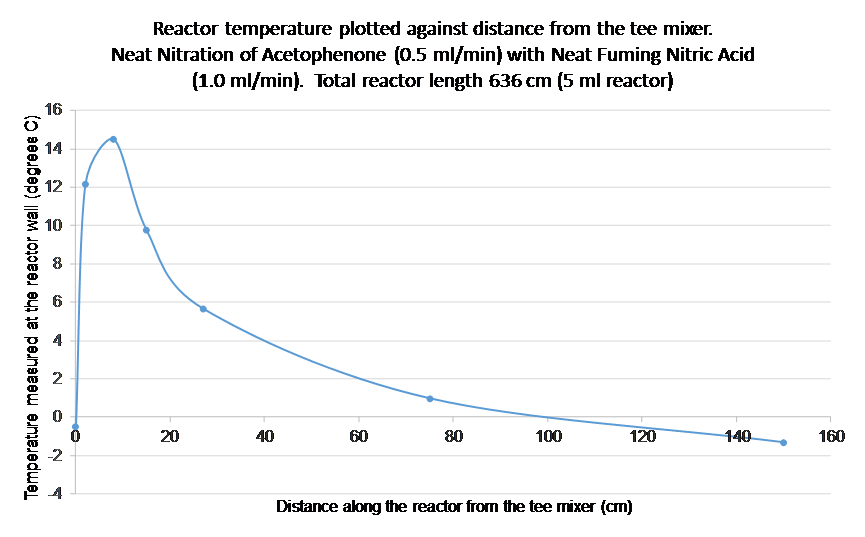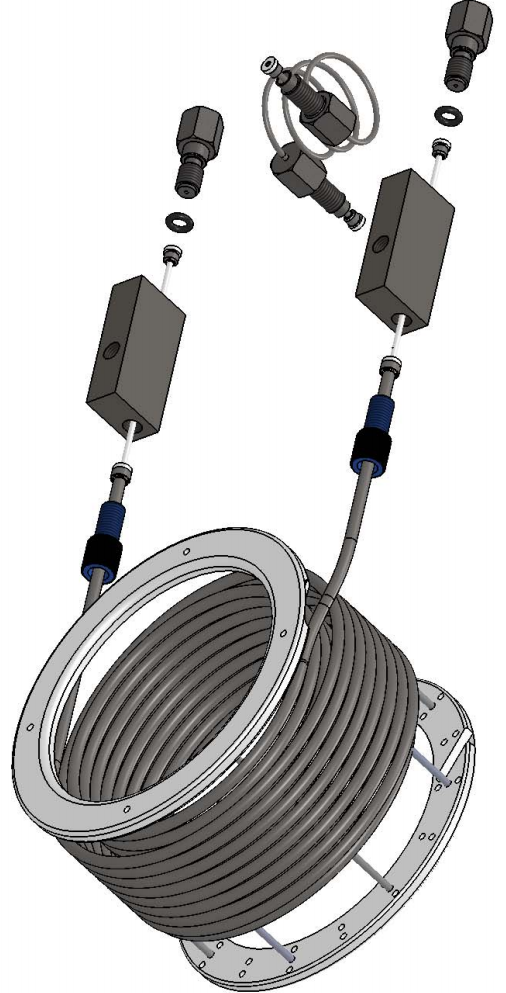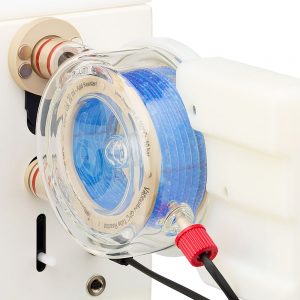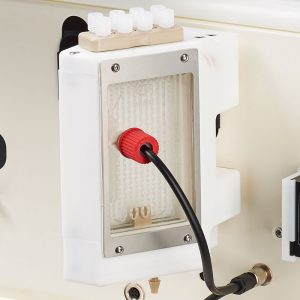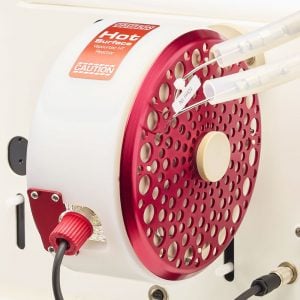Three years ago Vapourtec was undertaking a programme of work involving exothermic reactions with neat reagents. The work although successful highlighted an important characteristic. When using concentrated reagents combined with fast reactions then rates of temperature rise following stoichiometric mixing of neat reagents can be extremely high. These rates of temperature rise offer very little opportunity to remove heat even using a flow system with a very high surface area to volume ratio. The graph to the left shows the temperature rise when the mixer and reactor tube is immersed in a bath of chilled ethylene glycol at nominally 0°C. One common way to reduce this issue is to dilute the solution. Dilution reduces the theoretical adiabatic temperature rise. However, in many cases running reactions at high concentrations can be advantageous.
The progressive mixing reactor was developed originally as a prototype to reduce the temperature rise and thereby allow these neat reactions to be run at higher flow rates and thereby increase throughput. The progressive mixing reactor was inspired by Prof. Steven Ley’s work with tube-in-tube reactors for gas addition into flow reactors. The significant difference with the Vapourtec progressive mixing reactor is that the reactor has been developed to mix two liquid reagents over a 400 cm length of tubing.
The progressive mixing reactor has been manufactured in either stainless steel or PFA. The reactor is not yet a standard Vapourtec product however Engineers at Vapourtec are keen to work with any researchers or research groups who have an application that may be suitable for the progressive mixing reactor. Please contact Vapourtec to open a discussion

